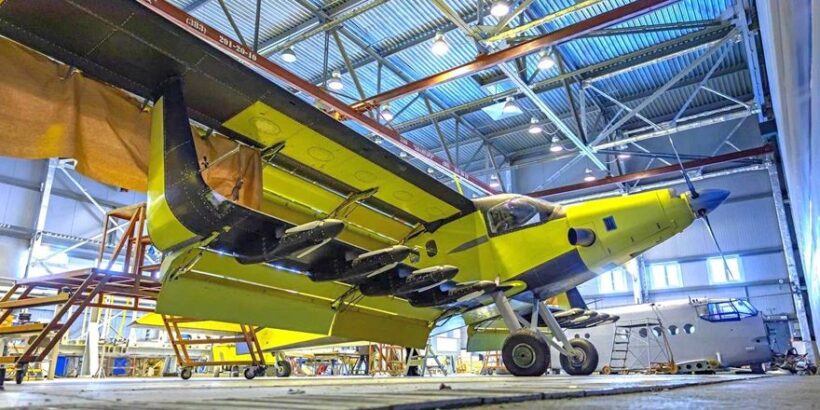The Siberian Research Institute of Aviation named after Chaplygin (SibNIA) is preparing the Partizan aircraft for unmanned flights. SibNIA, commissioned by the Foundation for Advanced Research, is continuing work on the development and testing of a demonstrator of an ultra-short takeoff and landing transport unmanned aircraft with a hybrid propulsion system and active blowing of the Partizan carrier surfaces.
‘After modifications on the first prototype, including strengthening of flap elements, increasing the wing span and chord of flaps, as well as adding the ability to control flaps in aileron mode, taxiing, short takeoff and landing, circular flight in manual mode, as well as the transition from manual mode to unmanned mode were worked out,’ the SibNIA said.
In parallel with flight tests the automatic control system was tested. The interaction between the ground control centre and the automatic control system was tested. The final assembly of the second copy of the Partizan aircraft was performed.
‘Currently, the schemes and algorithms that transmit flight information to the automated control system are being worked out. During the past tests of Partizan all the data on the operation of the aircraft was transmitted to the pilot’s cockpit, now they are transferred to the automated control system, there is a linkage of electric actuators, which will control the aircraft,’ the director of SibNIA Vladimir Barsuk commented.
According to him, after completing the linkage of electric drives will begin ‘training’ the aircraft to fly in unmanned mode. The system will be loaded with flight control algorithms, and then check their functioning, which will require training flights under the control of a test pilot. In 2025, SibNIA specialists plan to start working out the Partizan’s unmanned flight modes.
The first flight of the Partizan ultra-short take-off and landing aircraft took place in February 2024 in manned mode. The aircraft in both manned and unmanned modes will be in demand for cargo and passenger transport, rescue operations, firefighting, aerial chemical operations, sanitary aviation and aerial monitoring. The aircraft will be able to carry cargo weighing up to 1,000 kg over distances of up to 1,000 km, taking off and landing on unprepared sites with dimensions of 50 by 50 metres.


